| Your browser is not supported. | ||
|
Please browse our site using any of the following options:
| ||
Finesse Your Approach To Surf Fishing
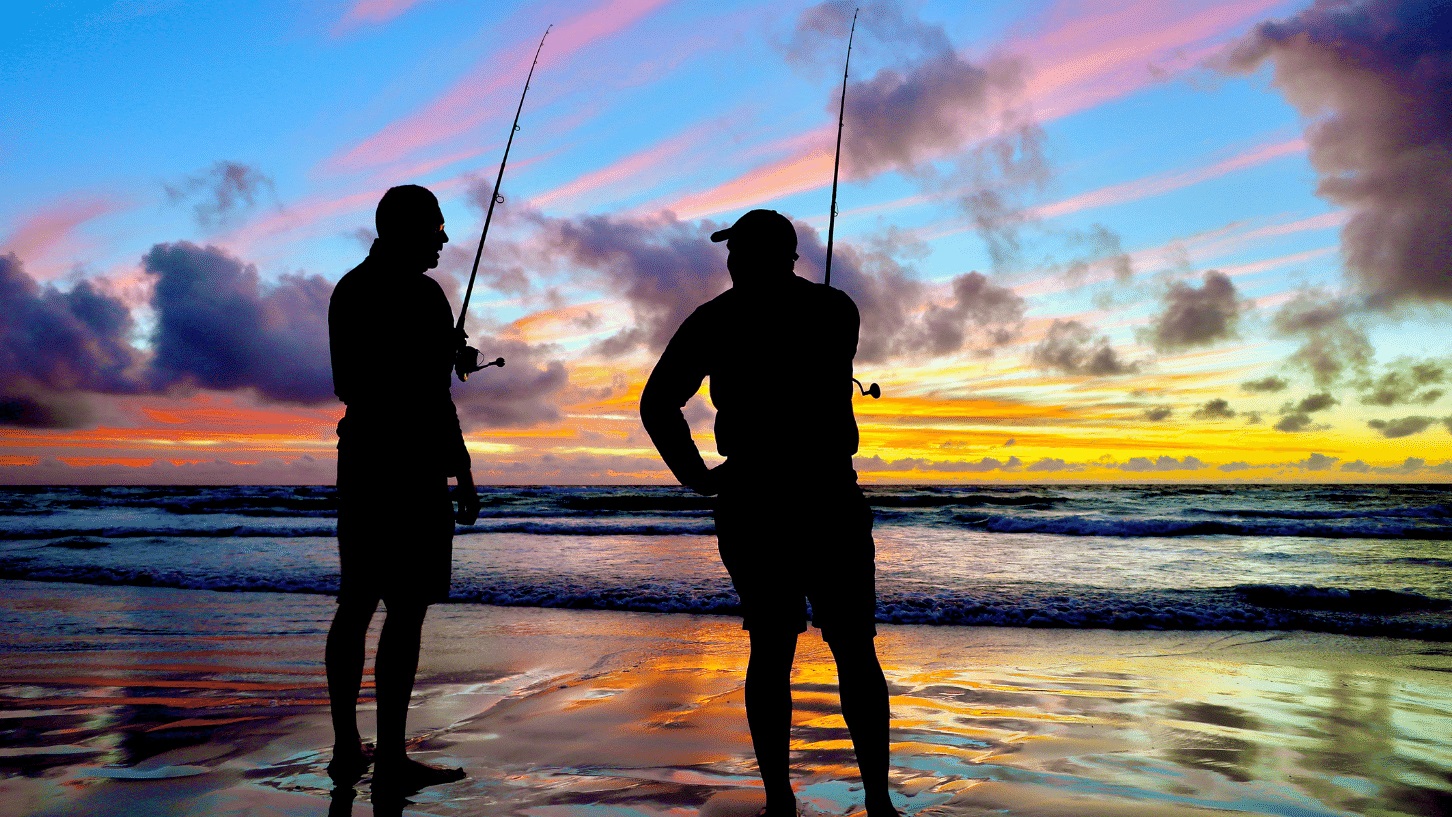
There's nothing quite like the crunch of clean sand underfoot or the thump of ocean swells breaking on an empty beach to soothe your mind and ease a weary body. Throw a fishing rod in the mix and that experience is only heightened. Here, Starlo offers some valuable advice on how to dramatically improve both the enjoyment and effectiveness of your surf fishing.
Keep it simple when surf fishing
Beach or surf fishing is one of the most popular forms of land based angling in Australia, and it's not hard to see why. Our island home is blessed with a multitude of surf beaches, both long and short, and many remain largely empty of people for much of the year.
These glorious strands stretch all the way from Broome, in the far north- west, right around the southern half of the continent (including Tasmania) to well beyond Fraser Island in the east... and they all have fish swimming within casting range of their wave-washed edges.
For me, one of the greatest attractions of beach fishing or surf casting is its inherent simplicity. You don't need a mountain of expensive equipment. Nor is long term planning essential. In fact, if you live close to the coast, beach fishing lends itself beautifully to spontaneous, spur-of-the-moment forays.
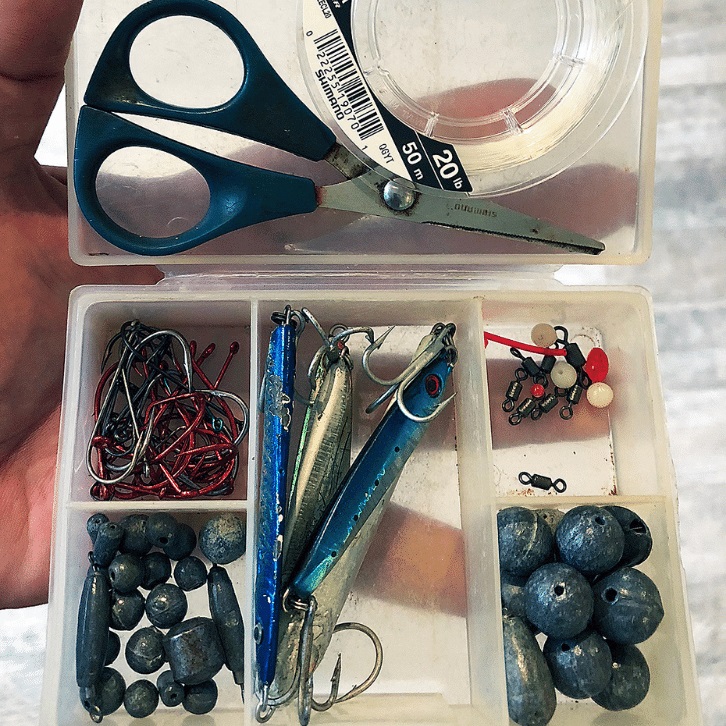
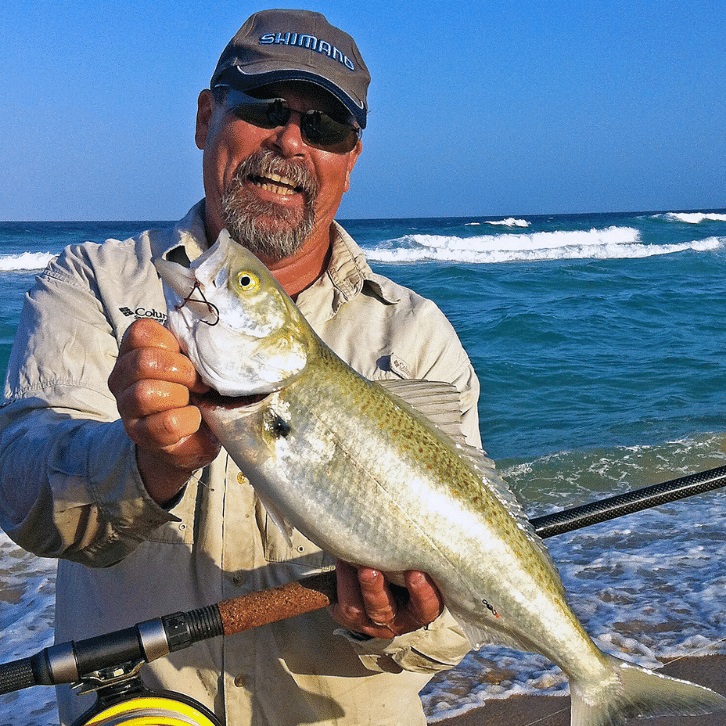
Preparation is the key
Of course, for consistent results in the surf, a little extra preparation and a tad more gear than one lure doesn't go astray. You can still carry everything you need for a longer session in a tackle bag, with a bucket in hand to transport the bait to your chosen spot and hopefully bring the catch home.
However, in my experience, choosing and using the right tackle makes a huge difference to both your chances of success and your overall enjoyment of the process.
Practical surf rods are generally quite long - anything from 9-13ft - which helps with casting and keeps your line up above any annoying surge and drag from the shore break. Yes, you can get by with shorter rods, especially on calm days, but a bit of length never goes astray in the surf.
But the most important thing to remember is that longer rods don't necessarily need to be heavier rods, especially in this era of space-age materials like graphite composites. There's a great deal to be said for applying a little finesse to your beach fishing.
Lighten up on your surf fishing gear
The single biggest mistake I see surf casters making right around the country is burdening themselves with ridiculously heavy gear. Let's face it, the vast majority of fish encountered in the surf weigh less than two kilos... often considerably less!
The most common target species on our southern beaches are fish such as whiting, bream, dart, tarwhine, tailor, Australian salmon, tommy rough (herring), flathead, mullet and trevally. These all typically run from a few hundred grams apiece to maybe a couple of kilos. Sure, we all live in hope of pinning a man-sized mulloway or a metre-plus gummy shark to really test our tackle. But in reality, these prizes are few and far between, and mostly fall to specialist anglers fishing big baits after dark, or prospecting along more remote stretches of coastline.
If you're seriously targeting the big stuff, by all means beef up your gear accordingly. But if you're primarily chasing the 'bread and butter' species that dominate our surf breaks, it's time to lighten up!
If you do, I absolutely guarantee that you'll catch more fish, and have a heap more fun while doing it. And if your number comes up for the jackpot and you happen to hook that fish of a lifetime, you're still very much in the running to land it, especially given some time, patience and a cool head.
Traditional surf fishing outfits
If I had to describe the typical surf-casting outfit I see in the hands of most beach fishing hopefuls, I'd immediately reach for terms like 'telephone pole', or images of burly Scotsmen in kilts puffing and panting as they toss the caber at a highland tournament!
All too often, the casual surf caster's weapon of choice is a 12ft fibreglass beast of a rod with a 6000-10,000 size spinning reel or big sidecast hanging off it. This over-sized reel will usually be spooled with springy, 20-40lb breaking strain monofilament line. In order to cast their rigs any meaningful distance off such unwieldy bazookas, the hapless anglers who choose this inefficient gear are forced to opt for massive star or helmet sinkers weighing almost as much as the majority of the fish they're likely to catch!
Because this overweight tackle is so incredibly cumbersome, those using it will very often heave their baits as far out as possible, then stagger up the beach to their rod holder and drop the outfit into it before flopping down on the sand to sit and expectantly watch the white-painted tip of their towering telephone pole for any faint signals of a bite. Sadly, what they mostly end up catching is sand crabs, stingrays and clumps of drifting kelp.
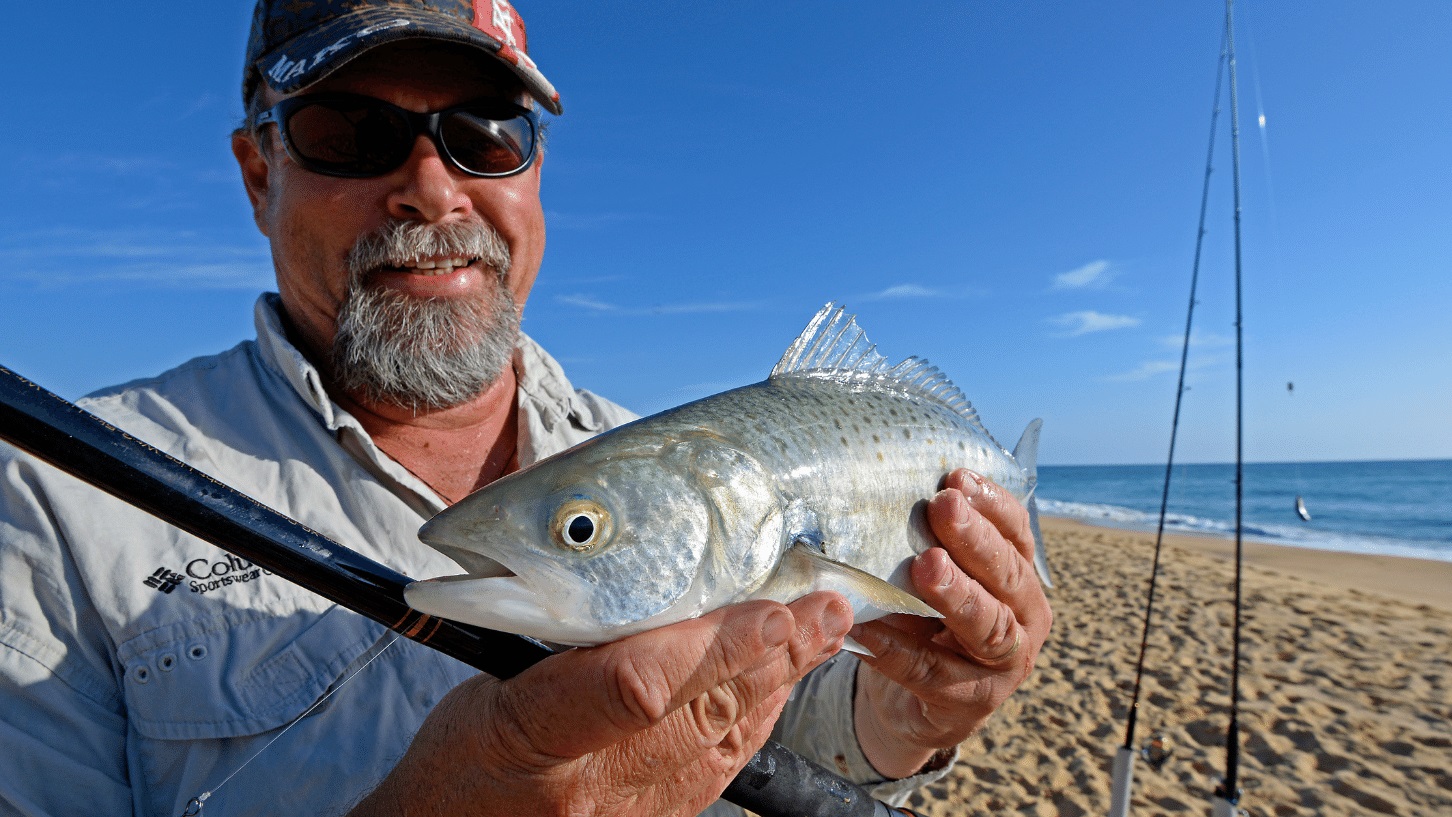
The finesse approach to surf fishing
I take a completely different approach to my surf fishing by choosing the lightest, most sensitive 9-12ft rod I can find (usually one with a fair proportion of graphite in its blank) and matching this stick up with a 2500-4000 size spinning reel or a light, shallow-spooled sidecast.
My main line is most often 5-10lb breaking strain (typically braid, although I sometimes revert to mono on a sidecast, as it's easier on the hands and fingers). To this I'll add a rod-length leader of 12-15kg nylon or fluorocarbon.
If I'm lure casting, my metal slice, baitfish profile or jig-rigged soft plastic goes directly onto the end of this leader. When I'm bait fishing, a modest ball or bean sinker (usually just 15-30g in weight) runs freely on the long leader, separated from a small swivel by a plastic bead to prevent knot damage when casting.
Below the swivel I can attach a half-metre hook link of fluorocarbon suited to the task at hand. If I'm using beach worms, prawns or pipis (cockles) strung onto smaller hooks to target whiting, bream, dart and mullet, I might run a 3kg hook link. When throwing half or whole pilchards for salmon, tailor and school jewfish (I always live in hope!), I'll beef this hook link up to 15 or 20lb fluorocarbon.
Because my outfit is so light, I don't drop it in a holder and wait for bites. Instead, I keep the gear in my hands, walking along the sand with the drift if necessary in order to keep a relatively straight line and stay in touch with my moving bait. Bites are transmitted readily via the lighter gear (especially when I'm running low-stretch braided line) and a lot more fish are hooked as a result. When they are, they provide a great account of themselves on the finer tackle, especially when they're not dragging half a house brick of sinker behind them!
Most fish need to be deftly played on this light gear, and they can't be simply hauled or dragged up the sand against a powerful backwash. Doing so will usually tear out hooks or even snap leader knots. Instead, you'll need to learn to make use of the breaking surf to wash your catch ashore, gaining line as a wave surges up and quickly yielding it as the water retreats. It keeps you on your toes and, in the process, makes you a much better angler.
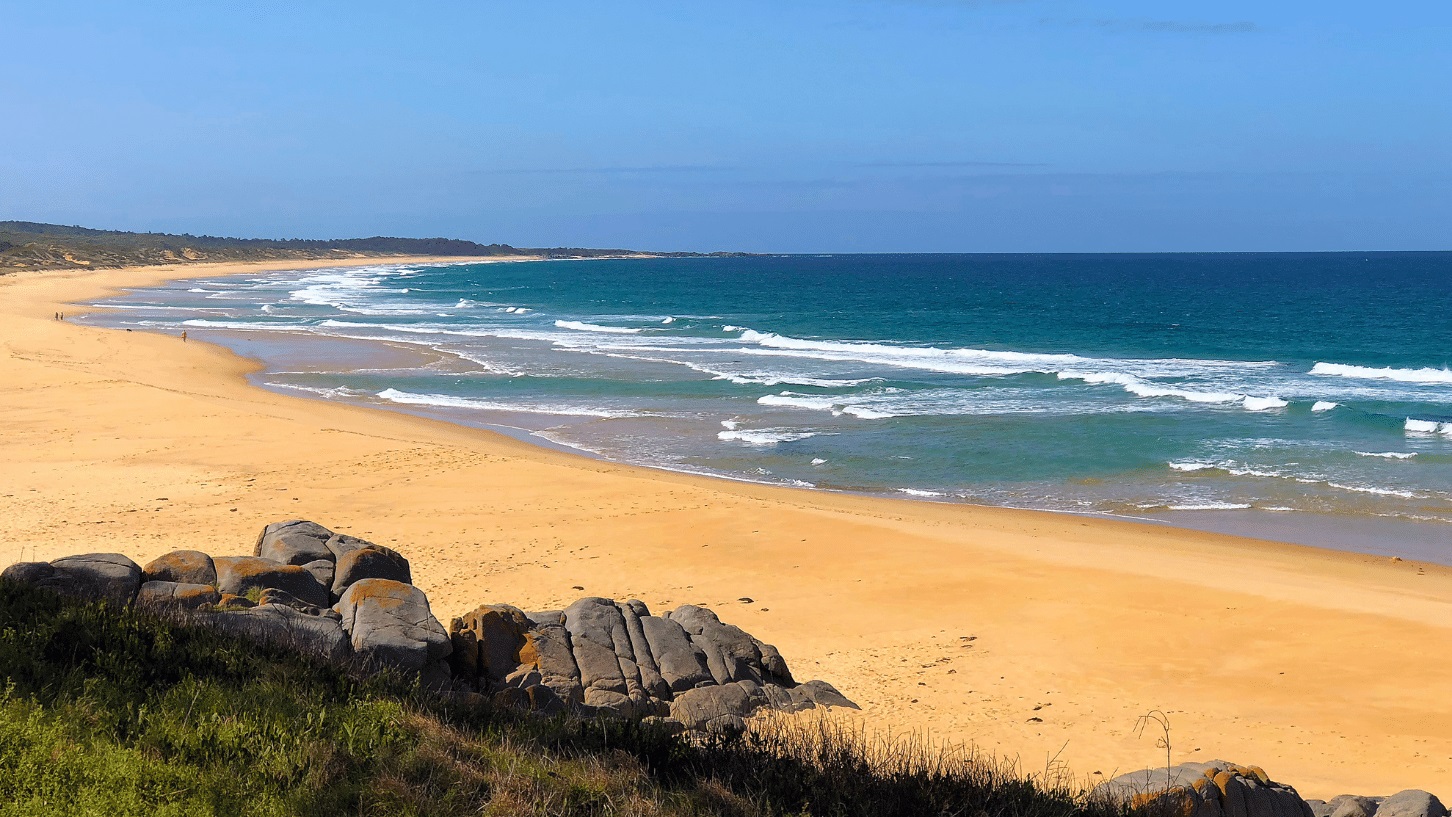
How to find fish in the surf
After lightening up, finding the best spot to cast your bait or lure into the surf is the next big trick.
Beaches are not unlike deserts - there's plenty of life out there, but it's thinly spread and often well concealed. The majority of this marine life is concentrated around isolated 'oases' represented by gutters, channels, holes or small outcrops of reef and rock. Focus firstly on those key areas. Climb to the highest point behind the beach and use polarised sunglasses to help locate these important features.
Deeper water is darker, and unbroken areas in the foamy surf line indicate gutters or holes and their accompanying rips or currents. Waves suddenly standing up and breaking signpost shallower bars and banks. It's often easiest to identify all of these prime patches of piscatorial real estate on the low tide.
But whatever you do, don't fall into the trap of thinking you always need to find the deepest hole or most scoured-out gutter to catch fish on the beach. Many species - especially foragers like bream, whiting, dart and mullet - regularly make use of the shallower flats and sloping edges of these deeper formations to look for worms, cockles, small crabs and other invertebrates uncovered by wave and current action. Explore these edges first, then try the deeper holes.
Tides can be important on the beach, too. A rising or making tide tends to bring feeding fish closer in to the beach, but low tide can also concentrate life in the holes and improve the "fish-to-water" ratio. Often, you'll only need a short cast to reach the feeding zone, especially at low tide. Don't make the mistake of always trying to punch holes in the horizon with your sinker and bait. It's easy to cast over the best fish, which may well be swimming literally at your feet, particularly on more steeply sloping beaches and at the 'change of light' periods (dawn and dusk).
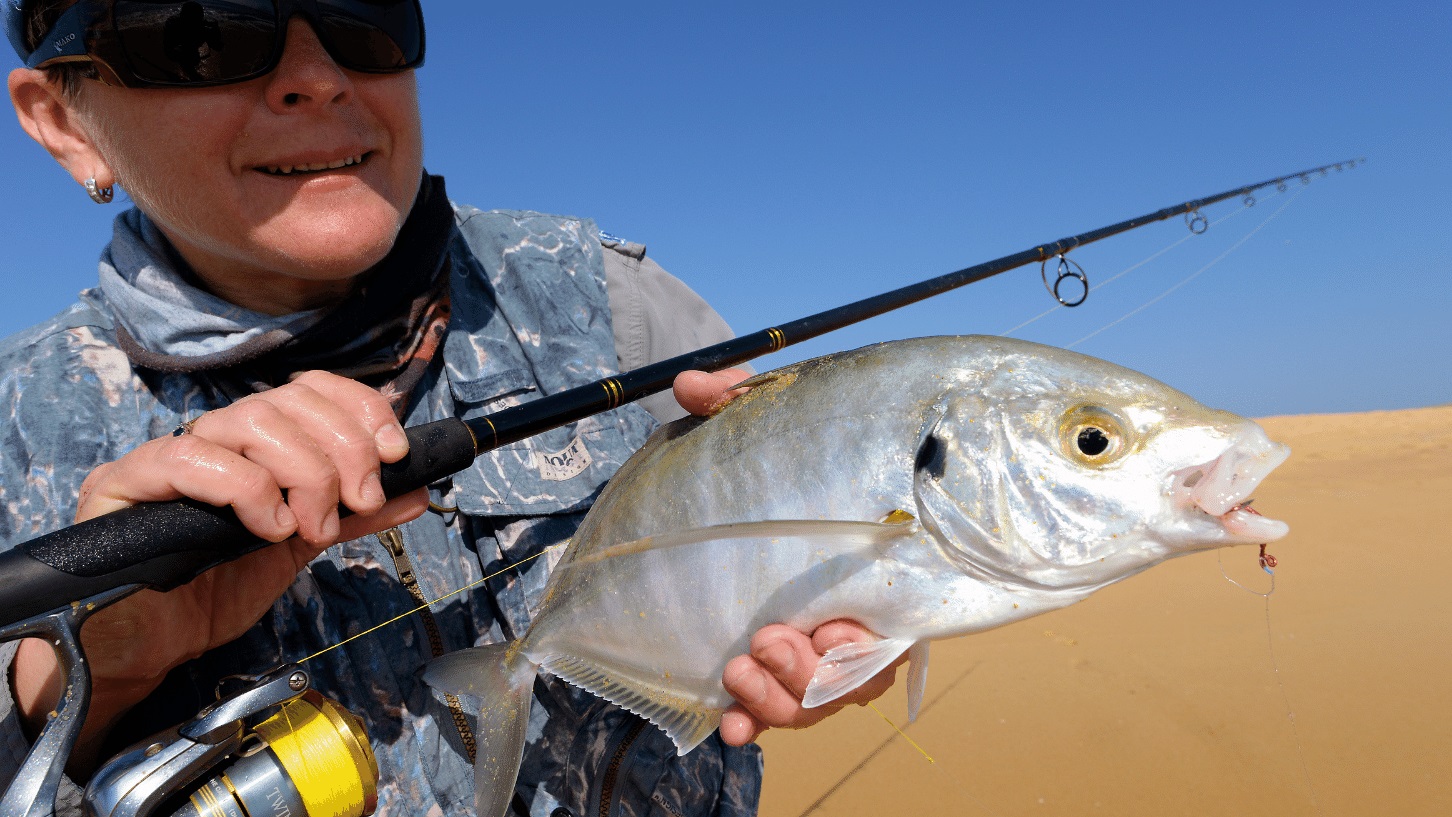
Sand between your toes
One last, but very important tip: modern, sophisticated reels with gears and other moving parts don't like sand. Never hit the beach without carrying a sand spike. Push this deep into the sand and stand your rod and reel in it every time you bait up, re-rig or need to put the outfit down. Trust me, your reels will last many years longer as a result.
While it's becoming a tad colder in many areas of the country right now, you can catch fish in the surf at any time of the year. As a bonus, there are fewer and fewer other people sharing our beaches as the weeks march on through winter. It's a wonderful time to be alive! You may need to rug up a little, or even consider full-length waders down south, but the rewards can be well worth it.
Remember also that nothing lasts forever. The cold will eventually lose its frosty grip and spring will sneak back out of the chilly shadows. Before you know, it'll be time for shorts, bare legs, clean sand crunching between your toes and the tang of salt in your nostrils as you belt a bait or lure out over the break. Catching a fish at such a time is almost a bonus... almost!